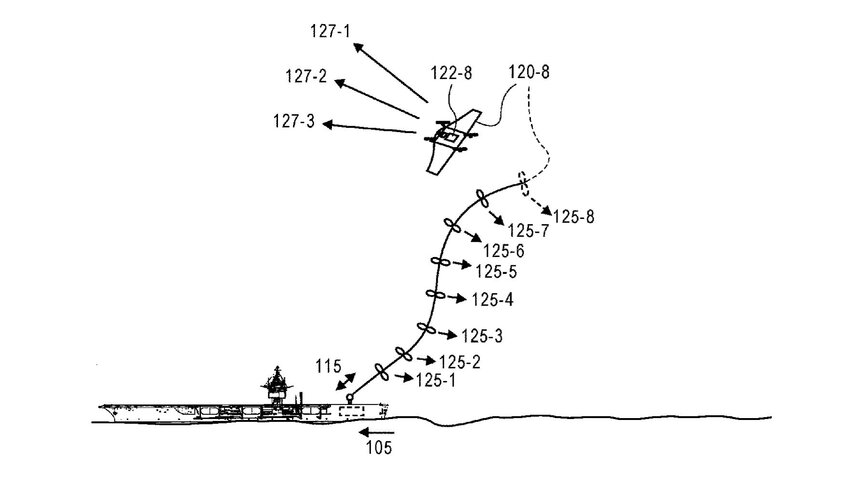Create a free profile to get unlimited access to exclusive videos, sweepstakes, and more!
Could drones launch satellites into space by cracking one giant whip?

Of all the ways we’ve found to sling stuff into space, a patented method that combines cutting-edge drone technology with good old-fashioned physics — the kind that even Indiana Jones would probably admire — may be the wildest one we’ve seen yet.
As first reported by GeekWire, Amazon has patented a satellite-launching process that, while untested at full scale, aims to summon the power of wave motion to catapult a payload into orbit, using a team of drones attached to an enormous whip to create an undulating effect along the whip’s length. The idea would be to release the satellite, positioned at the end, at just the right moment of upswing to send it on a trajectory toward the stratosphere.
The whip would be tethered at one end to an oceangoing ship to provide a stable base from which to create the whip’s wave effect. With the satellite payload at the other end, each piece of the small drone army would fly up and down at programmed intervals to get the whole thing bouncing in a snaky, rhythmic amplitude — similar, in principle, to the frequency-magnifying winds that famously contributed to the collapse of the 1940 Tacoma Narrows suspension bridge…except without the disastrous outcome.Scale is everything here — and in this case, it’s gigantic. Via the patent filing, the whip itself would have to exceed 10 miles in length in order to achieve the kind of altitude (and amplitude) to help its payload reach escape velocity. During launch, “the second end of the cable may reach, at its highest point, an altitude of up to approximately 500 feet, 2000 feet, or 60,000-70,000 feet (approximately 11-13 miles),” the patent states.
The so-called “energy-efficient launch system for aerial vehicles” represents one way to potentially reduce the high cost of deploying large numbers of satellites like those used in Amazon’s Project Kuiper, which aims to provide global broadband via satellites hovering in low Earth orbit. “The launch of a payload at such high altitudes and high speeds may be achieved using the energy-efficient, controlled, and repeatable launch process … which provides at least efficiency, cost, and safety improvements over conventional rocket fuel-based launch systems that require substantial amounts of fuel to be carried and burned by the payload to be launched,” the filing explains.
For now, it’s only a concept, and like many patents, it’s an idea that may remain a paper daydream for the foreseeable future. But just in case evidence one day does emerge of Amazon actually attempting to crack an epically scaled space whip, we’ve got Indy on speed dial to get the knee-jerk reaction from an experienced pro.



























